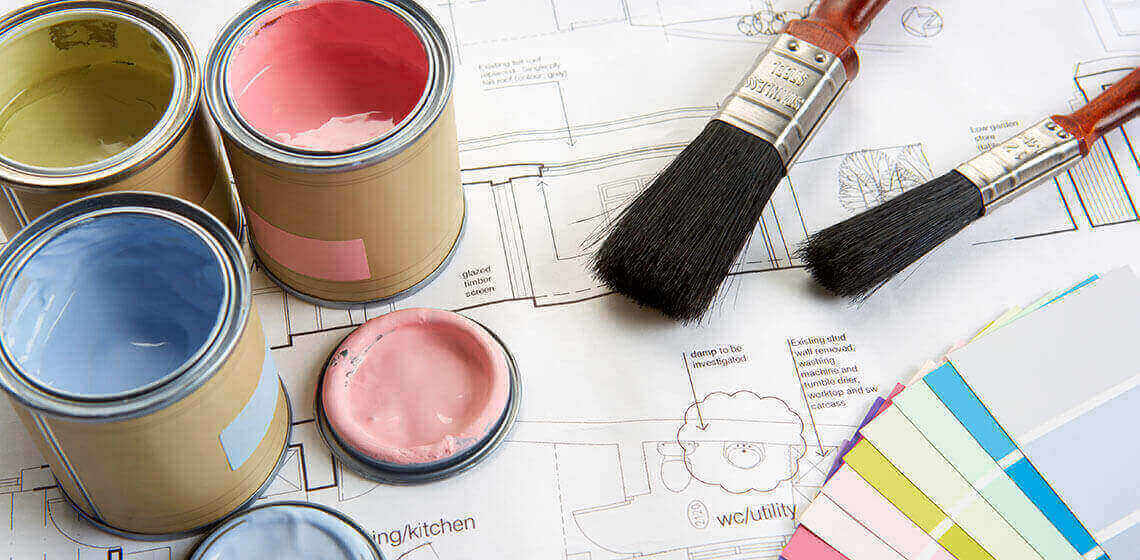
When it comes to construction projects, exterior commercial painting is often seen as a cosmetic enhancement to the overall appearance of a building. While enhancing the visual appeal is undoubtedly a significant aspect, it’s important to recognize that the benefits of exterior commercial painting go far beyond mere aesthetics. This often-overlooked facet of construction can play a pivotal role in the longevity, durability, and overall functionality of commercial buildings.
Enhanced Weather Resistance
One of the fundamental functional benefits of exterior commercial painting is the enhanced weather resistance it provides. Commercial buildings are subjected to a wide array of weather conditions throughout the year, including intense sunlight, heavy rain, snow, and fluctuating temperatures. A high-quality paint job acts as a protective barrier, shielding the building’s exterior surfaces from the damaging effects of these elements.
Ultraviolet (UV) rays from the sun can cause paint to fade and surfaces to deteriorate over time. The right type of paint, applied properly, can reflect UV rays, reducing the extent of fading and preventing premature degradation. Rain and moisture can lead to rot, mold, and structural damage if they seep into building materials. A well-painted exterior acts as a barrier, preventing water from infiltrating and causing harm.
Corrosion Prevention
Exterior commercial painting also plays a crucial role in preventing corrosion, especially in buildings located in areas with high humidity, saltwater exposure, or industrial pollutants. Metal surfaces, such as steel beams and fixtures, are particularly susceptible to corrosion, which can weaken the structural integrity of the building over time. A layer of paint serves as a protective shield against moisture and corrosive substances, significantly extending the lifespan of these metal components.
Energy Efficiency
Believe it or not, the right choice of exterior paint can contribute to improved energy efficiency within commercial buildings. Reflective and heat-resistant paints can help regulate indoor temperatures by reflecting a portion of the sun’s rays. This can lead to reduced cooling costs during hot summer months, as the building absorbs less heat.
Furthermore, properly painted surfaces with high solar reflectance values can mitigate the urban heat island effect. This effect occurs when built-up areas become significantly hotter than nearby rural areas due to human activities and a lack of vegetation. Using reflective paints on commercial buildings can help counteract this effect, creating a more comfortable and energy-efficient urban environment.
Preventing Pest Intrusion
Exterior commercial painting can also act as a deterrent against pests and insects. Buildings with cracks, gaps, or deteriorating surfaces become vulnerable to pest intrusion. Insects such as termites, ants, and cockroaches can find their way into the building through these openings, causing structural damage and health concerns. A well-maintained paint job seals off potential entry points, making it harder for pests to infiltrate the building.
Maintaining Structural Integrity
Paint isn’t just for appearances; it can significantly contribute to the overall structural integrity of a commercial building. For instance, wood surfaces are prone to rot, decay, and warping when exposed to moisture. A layer of paint helps prevent moisture from penetrating the wood, preserving its strength and stability.
Concrete surfaces can also benefit from exterior painting. Paint can act as a protective layer against water absorption, which can lead to cracking and weakening of the concrete over time. By safeguarding these surfaces, exterior painting plays a key role in maintaining the longevity and stability of the entire building structure.
Improved Air Quality
The choice of paint can have a positive impact on indoor air quality as well. Volatile organic compounds (VOCs) are chemicals found in many traditional paints that can release harmful fumes into the air, contributing to indoor air pollution. Opting for low-VOC or zero-VOC paints for the exterior not only benefits the environment but also ensures that the occupants of the building are not exposed to harmful chemicals.
Boosting Property Value
While not a direct functional aspect, the value added by a well-painted exterior cannot be overlooked. A visually appealing building exterior creates a positive first impression, which can influence potential clients, tenants, and investors. Additionally, a building with a well-maintained exterior is likely to command a higher resale value. It’s not just about aesthetics; it’s about the perceived quality and care that goes into the building’s maintenance.
In the realm of construction, exterior commercial painting is more than just a superficial touch-up. It holds functional benefits that contribute to the overall durability, longevity, and efficiency of commercial buildings. From weather resistance and corrosion prevention to energy efficiency and structural integrity, the advantages of a well-executed paint job extend far beyond aesthetics. So, when planning your next construction project, remember that the choice of exterior paint plays a critical role in enhancing both the functionality and visual appeal of the building.

